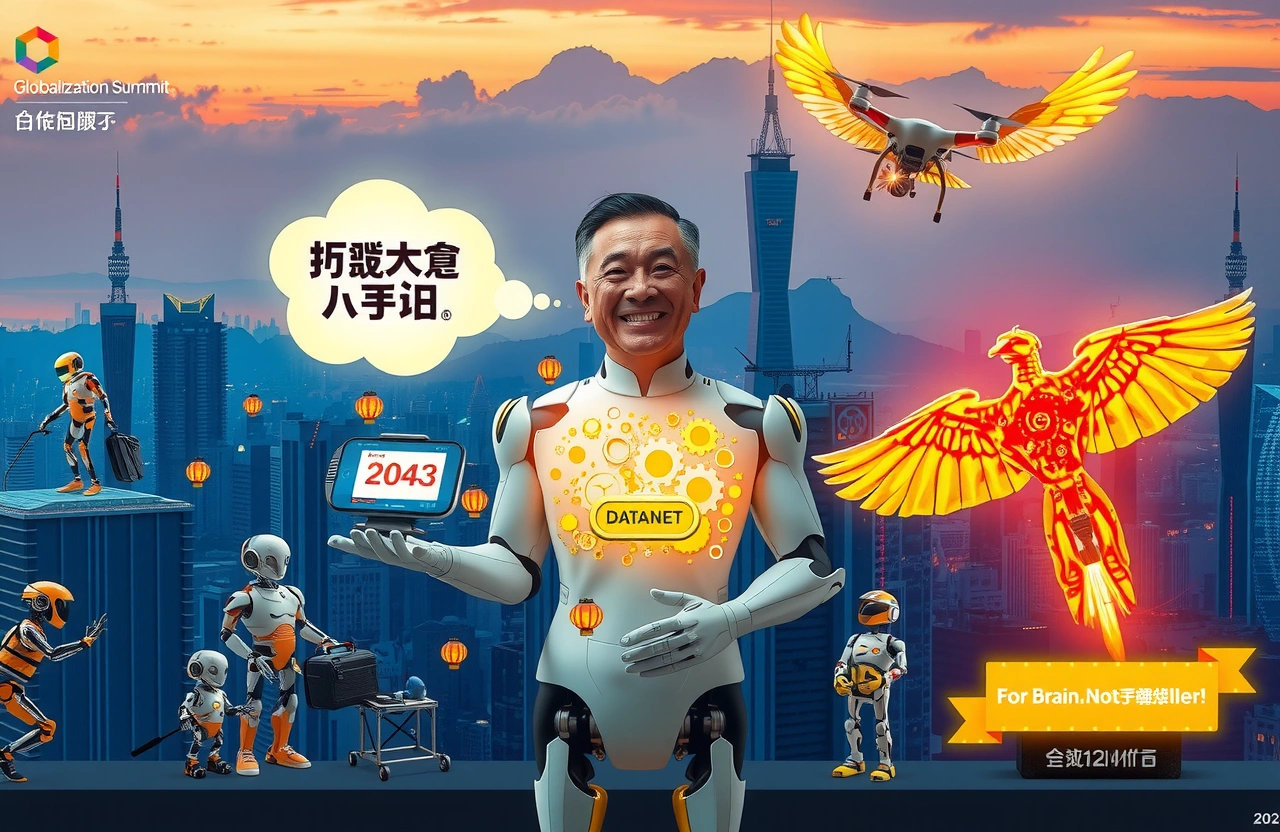The Gateway to China’s Tech-Driven Globalization
Shenzhen buzzed with innovation during the ‘2025 China Enterprise Globalization Summit’ from June 28-29, hosted by Phoenix News and sponsored by Snow Beer’s premium LIQUOR series. As businesses confront shifting global supply chains, Chen Hang (陈航), co-founder and CEO of Qunkuo Technology, delivered a paradigm-shifting vision: spatial intelligence’s future lies in robots overcoming their ‘brainless’ state. His revelation spotlights how most robots today—whether in warehouses or homes—remain glorified remote-controlled tools, failing to achieve true autonomy. Qunkuo plans to revolutionize this by developing AI ‘brains’ using proprietary datasets. For enterprises and tech enthusiasts alike, this breakthrough promises liberation from repetitive labor and redefines human-robot collaboration. Let’s dissect Chen’s argument—and why robots without brains represent spatial intelligence’s final frontier.
The gathering united over 500 executives under the theme ‘For an Open World,’ aiming to help Chinese firms navigate overseas expansion amid geopolitical realignments.
Unpacking Spatial Intelligence: From Roads to Living Rooms
Spatial intelligence enables machines to understand and navigate environments, but its application splits sharply between outdoor and indoor contexts. Unlike autonomous vehicles thriving in outdoor settings, indoor robotics faces a developmental lag due to fundamental data constraints.
Why Autonomous Driving Accelerated Spatial Intelligence Outdoors
Self-driving cars leverage massive datasets from sensors mapping roads. Open-source libraries like Waymo Open Dataset catalogue billions of miles driven, feeding AI models that learn through triple pillars:
- Data: Rich real-world scenarios like weather variations
- Algorithms: Deep neural networks predicting obstacles
- Computing Power: GPUs processing complex simulations
Such abundant information lets systems recognize pedestrians through LiDAR scans or optimize routes using crowdsourced maps—tasks requiring contextual awareness core to spatial intelligence.
The Indoor Data Drought Crippling Robotics Evolution
Indoor spaces lack equivalent datasets. Unlike standardized roads, homes have erratic layouts varied by furniture placement and lighting. As Chen noted at the forum: ‘No systematic repository exists for detailed interior physics or object interactions.’ Consequently, robots without brains dominate—like warehouse transporters needing manual steering or hospital delivery bots programmed solely for static paths.
Robots as Spatial Intelligence’s Ultimate Form
Chen argues conceptually robots embody spatial intelligence’s purest application indoors because they integrate mobility, perception, and decision-making. Yet until generated ‘brains’ empower them, these machines cannot transcend primitive functionality.
The Plight of Robots Without Brains Today
Contemporary robots without brains operate like puppets:
- Factory arms assembling items require preset coordinates
- Domestic vacuum cleaners blindly bump into obstacles
- Surgical assistants rely entirely on surgeons’ joystick inputs
These robots without brains consume human oversight, negating efficiency gains. Per Boston Consulting Group, industries deploy 44% more robots than five years ago—but productivity stagnated where autonomy wasn’t optimized.
Why Indoor Robotics Demands Structured Data
Qunkuo’s library tackles precisely this gap. Since launching in 2011, its platforms like CoolaCAD helped architects design 3D spaces, compiling:
- Accurate room dimensions avoiding virtual ‘drift’
- Material properties modeling light refraction or sound acoustics
- Parametric object libraries tagging interactive elements like doors
When trained on such structurally accurate datasets instead of generic photos, AI learns spatial rules faster—the cornerstone for advancing robots without brains.
Building Bot Brains: Qunkuo’s Algorithmic Breakthrough
Chen’s team focuses on generating dynamic ‘decision cores’ tailored for robot-specific tasks. Each brain combines perception modules with adaptive reasoning through multi-stage workflows.
Layered Intelligence Architecture
The system processes:
- Perception Layer: Cameras/radar interpreting surroundings
- Policy Layer: Reinforcement learning choosing actions
- Memory Layer: Recalling past actions for efficiency
For example, a warehouse robot needing to retrieve boxes uses perception to identify items stored amidst clutter, policy selection to optimize paths avoiding collisions, and memory to record successful routes.
Task-Based Brain Generation Framework
Flexible algorithm pipelines customize brains per scenario:
- Input structured Qunkuo datasets simulating environments
- Generate task-specific logic trees using neuro-symbolic AI
- Test robustness via physics-engine stress trials
Whereas off-the-shelf robots without brains perform single jobs rigidly, this approach accommodates unpredictability—say, hotel bots rerouting around spilled luggage automatically.
Liberating Labor Through Autonomous Solutions
Redesigning robots without brains addresses a $200 billion global market for automated helpers, per McKinsey projections. Early implementations suggest immense socio-economic impacts:
Reducing Dangerous and Repetitive Work
In construction trials, brain-equipped drones automatically inspected unstable structures—mapping damage distances impossible manually—dropping accident rates by 87%. Similarly, retail robots handling inventory reviews freed clerks for interpersonal exchanges elevating customer satisfaction.
Cross-Industry Transformation Pathways
Deployments extend to:
- Healthcare: Sanitation bots disinfecting ICUs overnight
- Agriculture: Harvester bots managing crop variations
- Logistics: Last-mile delivery bots adapting traffic flows
However, successful scaling requires regulating AI ethics alongside tech advancements—handling edge cases responsibly.
The Roadmap Ahead
Qunkuo collaborates with Shenzhen Stock Exchange-listed manufacturers integrating APIs enabling brains inside modular bots. Within Chinese cities alone, expect 1.4 million operational robots without brains upgraded before 2027. Meanwhile, public datasets could democratize developments globally.
Spatial Intelligence’s New Era: Where Humans Command—Not Control
Solving robots without brains isn’t about replacing humans—it’s elevating them. Machines leveraging spatial intelligence assume hazardous or tedious duties while people strategize innovations. As Chen concluded: ‘True automation emerges only when brains empower execution.’ For businesses, implementing such systems boosts competitiveness; for society, it fosters safer, more fulfilling labore Explore robotics partnerships at QunkuoTech.com/watch-forum-replay—and help build this brain-powered future.




